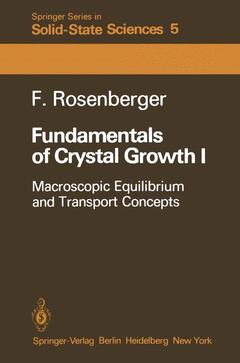The intrinsic properties of a solid, i. e. , the properties that result from its specific structure, can be largely modified by crystallographic and chem ical defects. The formation of these defects is governed by the heat and mass transfer conditions which prevail on and near a crystal-nutrient in terface during crystallization. Hence, both the growth of highly perfect crystals and the preparation of samples having predetermined defect-induced (extrinsic) properties require a thorough understanding of the reaction and transport mechanisms that govern crystallization from vapors, solutions and melts. Crystal growth, as a science, is therefore mostly concerned with the chemistry and physics of heat and mass transport in these fluid-solid phase transitions. Solid-solid transitions are, at this time, not widely employed for high quality single-crystal production. Transport concepts are largely built upon equilibrium considerations, i. e. , on thermodynamic and phase equilibrium concepts. Hence to supply a "workable" foundation for the succeeding discussions, this text begins in Chapter 2 with a concise treatment of thermodynamics which emphasizes applications to mate rials preparation. After working through this chapter, the reader should feel at ease with often (particularly among physicists) unfamiliar entities such as chemical potentials, fugacities, activities. etc. Special sections on ther mochemical calculations (and their pitfalls) and compilations of thermochemi cal data conclude the second chapter. Crystal growth can be called. in a wide sense, the science and technology of controlling phase transitions that lead to (single crystalline) solids.



